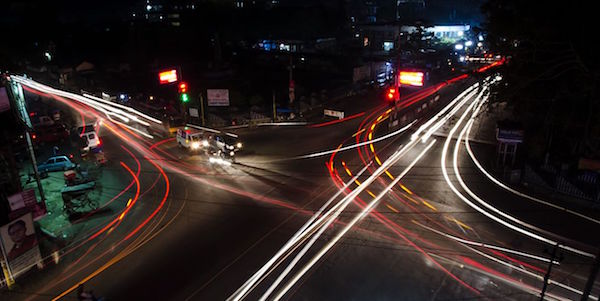![]()
 Despite periodic détentes since the 1990s India-Pakistan relations are at a low point ahead of the anniversary of Partition. On the other hand, the two Punjabs have often had a better relationship, despite the fact they bore the brunt of the upheaval and violence alongside Sind and Rajasthan 70 years ago. Tridivesh Singh Maini and Sandeep Sachdeva discuss how people-to-people contacts and trade ties have contributed positively towards reducing hostilities, and write that central governments should recognise the benefits of creating an environment where these linkages can flourish.
Despite periodic détentes since the 1990s India-Pakistan relations are at a low point ahead of the anniversary of Partition. On the other hand, the two Punjabs have often had a better relationship, despite the fact they bore the brunt of the upheaval and violence alongside Sind and Rajasthan 70 years ago. Tridivesh Singh Maini and Sandeep Sachdeva discuss how people-to-people contacts and trade ties have contributed positively towards reducing hostilities, and write that central governments should recognise the benefits of creating an environment where these linkages can flourish.
Ups and down in India-Pakistan relations over 70 years
This week India and Pakistan are commemorating the 70 years of independence from British rule. Relations between the neighbours have been tense for the large part of this post-independence era, escalating into war in 1965 and 1971. However, there have been interludes of hope.
For example, on the 50th anniversary of independence in 1997, optimism was generated by then-Prime Ministers IK Gujral and Nawaz Sharif. Gujral, born in Jhelum (Pakistan), and Sharif whose family had migrated from Amritsar (India) pre-partition, developed a strong chemistry and sought to revive engagement. Gujral’s approach towards Pakistan was dubbed as soft, and driven by nostalgia as opposed to hard-nosed realism but his successors, Atal Bihari Vajpayee and Dr Manmohan Singh continued to explore imaginative ways of reaching out.
There was a significant improvement in ties between 2003 and 2008. Srinagar-Muzzafarabad and Amritsar-Nankana Sahib bus services were running, along with trains between Munabao-Khokhrapar. During his presidency, which began in 2008, Asif Ali Zardari pledged to broaden these people-to-people contacts, and Nawaz Sharif (although not in power at the time) even suggested that Pakistan should start granting Indians visas on arrival. However, these ties were disrupted by the Mumbai attacks in 2008.
Even current PM Narendra Modi and Nawaz Sharif (who was recently disqualified from office) did initially make efforts to strengthen ties. Sharif attended Modi’s swearing in 2014, much to the chagrin of sections of the establishment, while the Indian Prime Minister made an impromptu stopover in Lahore in December 2015, to attend Sharif’s granddaughter’s wedding. His decision drew flak from opposition parties including the Congress.
However, these overtures were disrupted by the Pathankot terror attack barely a week after Modi’s visit, followed by other incidents including an attack on an Indian army base in Uri where 19 soldiers were killed, and the recent murder of seven pilgrims visiting the holy shrine of Amarnath in Jammu and Kashmir. Pakistan is perceived as being soft on terror groups which have been targeting India, including the Lashkar-e-Taiba and Jaish-e-Mohammed, and therefore culpable. In addition, the China-Pakistan nexus has strengthened as India-China relations have cooled, and the China Pakistan Economic Corridor which is due to pass through disputed territory has only resulted in alienating India further.
The two Punjabs
Apart from Jammu and Kashmir, one state which has borne the brunt of this strained relationship is Punjab, which was cut into two during Partition and experienced some of the worst violence as more than 15 million people were displaced. For a long time the atrocities witnessed by Punjabis on both sides of the border went largely undocumented although large scale projects, such as the 1947 partition archive and a Partition Museum in Amritsar, are beginning to address this.

Despite the trauma, the relationship between the two Punjabs has often been better than that of their parent nations, and state governments have sought to develop ties when the diplomatic environment is more favourable. In particular, people-to-people contacts and trade links have contributed positively towards reducing hostilities. During the thaw in relations between 2004 and 2008, Chaudhry Pervaiz Elahi (Chief Minister of Punjab in Pakistan) and Captain Amarinder Singh (CM of Punjab in India) sought to enhance transport links and cultural exchanges beginning with the World Punjabi Conference in January 2004, followed by the first Joint Punjab Games held in Patiala in December 2004. The Pakistan Punjab Government took steps for renovating key Sikh shrines including Nankana Sahib, and improving connectivity as well as infrastructure.
These efforts were also disrupted by the 2008 Mumbai attacks, but when tensions began to subside again in 2011, then-CM of Indian Punjab Parkash Singh Badal and his Pakistani counterpart Shahbaz Sharif were quick to rekindle linkages. During his visit to Pakistan, then Deputy CM Sukhbir Singh Badal mooted a number of interesting proposals. It was decided to set up a Joint working committee for promoting closer economic and trade ties. Opening additional land crossings (at Hussainiwala and Sulemanki) were also discussed, and in 2012 an Integrated Check Post at Attari was inaugurated. This did lead to a rise in trade and remains open, though the smuggling of drugs and subsequent tensions have dampened its success.
In December 2013, Shahbaz Sharif visited India, and commented that the Punjabs “promote cooperation for the common interest of peace, harmony, economic growth and leveraging each other’s potential”. All political parties in the Indian Punjab welcomed Modi’s invitation to Nawaz Sharif, as well as his stopover in Lahore, and the possibility of selling surplus power from Indian Punjab to Pakistan was under consideration until very recently. Although it was initially proposed by Sukhbir Singh Badal, Captain Amarinder Singh (who was re-elected as Chief Minister in March 2017) pursued the issue during his meeting with the Indian Prime Minister in April 2017. It was only as a result of the latest deterioration in relations due to tensions on the LOC that the idea was shelved.
Proponents of Punjabi cooperation
It is notable that irrespective of the party in power in Indian Punjab, central governments have backed efforts of state governments. Captain Amarinder Singh is a Congress leader, yet has been supported supported by both Vajpayee and Modi’s BJP-led governments. Sukhbir Singh Badal, who belongs to the Shiromani Akali Dal Party, received similar support from the central Congress government on his visit to Pakistan.
It is not just the political class, but Chambers of Commerce like the PHD Chamber of Commerce (India) and Lahore Chamber of Commerce which signed a Memorandum of Understanding to collaborate on increasing trade in 2011. They have been organising trade exhibitions in both countries even during times of tension, with the aim of providing businessmen from both sides the opportunity to exhibit commodities, and reduce misunderstandings. Chambers from both sides have also been urging their governments to mitigate tensions.
In addition, the diaspora has been playing a positive role. Groups like the Academy of Punjab in North America (APNA) based in the US have been trying to promote Punjabi literature, by organising events and bringing out a magazine Saanjh (which means commonality) in both the Gurmukhi and Shahmukhi scripts. This magazine is published from both Sahiwal (Pakistan) and Ludhiana (India).
A number of individuals and Sikh organisations in the diaspora have played a key role in lobbying the Pakistan government for easier access to Sikh shrines, and have even pitched for a religious corridor from Dera Baba Nanak (India) to Darbar Sahib, Narowal in the town of Kartarpur (Pakistan), where the founder of the Sikh faith spent the last years of his life. The demand is to have a visa free pilgrimage, whereby Sikhs can pay obeisance and return the same day, although this has been refused by India on security grounds. Pakistan on its part realises the potential of religious tourism and the World Bank has shown an interest in helping Punjab in particular to promote tourism, which could be a game changer for the economy. However, to date it has not been able to fully uphold its repeated promise to grant Sikhs unfettered access to key religious sites (five of which are in Punjab) so this will need to be prioritised.
Where next?
For any sort of improvement in ties between both countries, and meaningful engagement between the two Punjabs, the central government in Pakistan must act decisively against the terrorist groups in its midst, which are already a nuisance for Pakistan as well. The Jamaatud Dawa Chief’s house arrest was recently extended by 2 months, and this is an encouraging step, but the screws need to be tightened further on such organisations.
India on its part should be more imaginative in reaching out to sections of the business community in Pakistan, as well as intelligentsia, which are wary of Chinese economic domination on the one hand, and are opposing fundamentalism and terrorism on the other.
70 years on from Partition the emphasis should be on building bridges, not reopening old wounds. The Punjabs have demonstrated a willingness to collaborate through both trade and people-to-people linkages and these efforts have highlighted the economic and social benefits that can be reaped. State governments should continue to develop linkages, while central governments should recognise the benefits of creating an environment where these linkages can flourish.
This article gives the views of the authors, and not the position of the South Asia @ LSE blog, nor of the London School of Economics. Please read our comments policy before posting.
About the Authors
![]() Tridivesh Singh Maini is a New Delhi based Policy Analyst associated with The Jindal School of International Affairs, OP Jindal Global University, Sonipat. He is also the author of ‘South Asian Cooperation and the Role of the two Punjabs’ (2007). His research interests include India-Pakistan relations and the two Punjabs, and the India-Pakistan-China triangle.
Tridivesh Singh Maini is a New Delhi based Policy Analyst associated with The Jindal School of International Affairs, OP Jindal Global University, Sonipat. He is also the author of ‘South Asian Cooperation and the Role of the two Punjabs’ (2007). His research interests include India-Pakistan relations and the two Punjabs, and the India-Pakistan-China triangle.
 Sandeep Sachdeva is a New Delhi based Policy Analyst and a graduate of the Jindal School of International Affairs.
Sandeep Sachdeva is a New Delhi based Policy Analyst and a graduate of the Jindal School of International Affairs.







